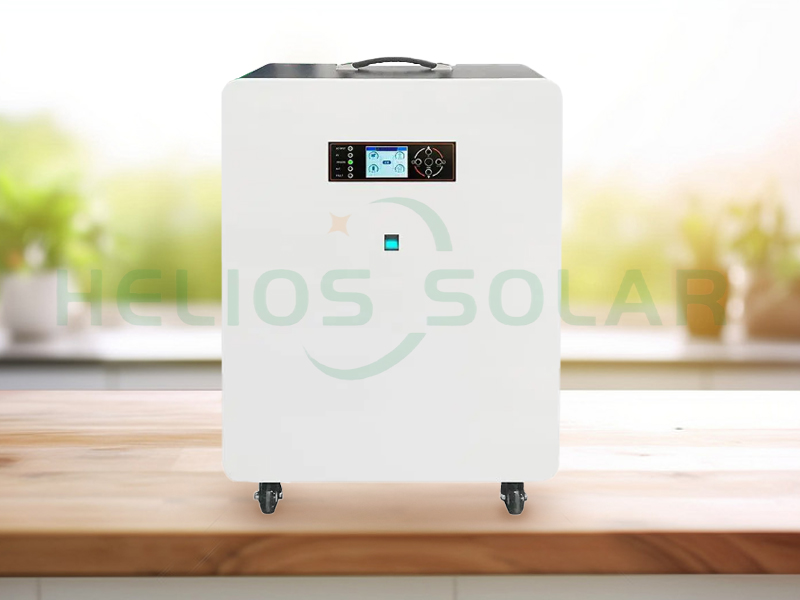In a rapidly evolving technology landscape, the demand for efficient energy storage solutions has never been higher. One of the most promising innovations in this field is the optical storage lithium battery integrated machine. This advanced system combines the advantages of optical storage technology with the capabilities of lithium batteries to provide a compact and efficient solution for a variety of applications. However, with the variety of options available on the market, choosing the right integrated machine can be a daunting task. This article will guide you through the basic factors to consider when choosing an optical storage lithium battery integrated machine.
Learn about optical storage and lithium batteries
Before diving into the selection process, it’s critical to understand what optical storage and lithium batteries are and how they work together in an integrated machine.
Optical Storage: This technology uses light to read and write data and is commonly used in devices such as CDs, DVDs, and Blu-ray Discs. Optical storage is known for its durability and longevity, making it an excellent choice for archiving data.
Lithium Batteries: These batteries are widely used due to their high energy density, light weight, and long cycle life. They are commonly found in portable electronics, electric vehicles and renewable energy systems.
Integrated machines combining these two technologies can provide powerful solutions for data storage and energy management, making them ideal for applications in various fields such as telecommunications, renewable energy and consumer electronics.
Key factors to consider
The following factors should be considered when choosing an all-in-one optical storage lithium battery machine:
1. Capacity and Performance
The first thing to evaluate is the capacity of the entire machine. This includes both the storage capacity of the optics and the energy capacity of the lithium battery. Assess your specific needs – how much data do you need to store, and how much energy do you need? Look for machines that offer scalable solutions that allow you to expand capacity as your needs grow.
2. Efficiency
Efficiency is a key factor in any energy storage solution. Look for machines with high energy conversion rates and low energy losses during storage and retrieval. Efficient integrated machines not only save you energy costs but also reduce your carbon footprint.
3. Durability and Service Life
Optical storage media and lithium batteries have their own lifespans. Optical discs can last for decades if stored properly, while lithium batteries typically have a cycle life of 500 to 2,000 times, depending on quality. When choosing an integrated machine, consider the durability of both components and look for a warranty or guarantee that reflects the manufacturer’s confidence in their product.
4. Compatibility and Integration
Make sure the integrated machine is compatible with your existing systems. This includes checking for compatibility with software, hardware, and other storage solutions you may already be using. A machine that integrates seamlessly into your current setup will save you time and resources in the long run.
5. Cost and Budget
While it’s tempting to go with the cheapest option, the total cost of ownership must be considered. This includes not only the initial purchase price, but also maintenance costs, energy consumption and potential upgrades. Investing in a high-quality optical storage lithium battery all-in-one may require a higher upfront cost, but can lead to significant savings over time.
6. Manufacturer Reputation and Support
Research the manufacturer of the integrated machine you are considering. Look for a company with a strong reputation in the industry, positive customer reviews, and a history of innovation. Also, consider the level of customer support they provide. A reliable manufacturer should provide comprehensive support, including installation, maintenance, and troubleshooting.
7. Technological Progress
The fields of optical storage and lithium battery technology are constantly evolving. Stay up to date on the latest developments and trends in the industry. Machines with cutting-edge technology can deliver enhanced performance, efficiency and functionality to benefit your specific application.
8. Environmental Impact
As sustainability becomes increasingly important, consider the environmental impact of integrated machines. Look for products designed with eco-friendly materials and processes. Additionally, consider how the machine’s energy consumption aligns with your sustainability goals.
In conclusion
Choosing the right optical storage lithium battery all-in-one machine requires careful consideration of a variety of factors, including capacity, efficiency, durability, compatibility, cost, manufacturer reputation, technological advancements and environmental impact. By taking the time to evaluate these aspects, you can make an informed decision that meets your specific needs and contributes to a more sustainable future. As technology continues to advance, investing in high-quality integrated machines will not only enhance your data storage and energy management capabilities, but also put you at the forefront of industry innovation.
Post time: Oct-12-2024


